Home » Tree Service
Category Archives: Tree Service
What Is Tree Remediation?
Tree removal is done to remove a dead or overgrown tree from a property. It can also be done to prevent damage the tree might cause during a storm. Routine pruning and the removal of broken limbs do not require a permit. However, destructive pruning practices like topping and adverse pruning are prohibited.
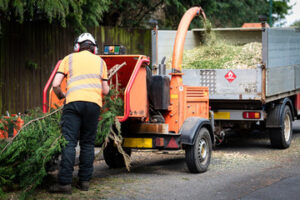 Tree Service Irvine CA can help improve your property’s curb appeal and boost its value by removing unruly or dead trees. In addition, it removes obstructions to your view that can block sunlight and reduce your outdoor living space. A professional service has the skills and tools to do the job safely and effectively while minimizing damage to your home and yard. In some areas, getting a permit is necessary before starting the process.
Tree Service Irvine CA can help improve your property’s curb appeal and boost its value by removing unruly or dead trees. In addition, it removes obstructions to your view that can block sunlight and reduce your outdoor living space. A professional service has the skills and tools to do the job safely and effectively while minimizing damage to your home and yard. In some areas, getting a permit is necessary before starting the process.
The type of tree you want to remove will determine the process involved. For instance, a large tree will be more difficult to take down than a small one. Also, a tree that’s diseased or near power lines or a roof overhang is likely to be more dangerous to dismantle than one that’s healthy. Some of the most popular methods for removing a tree include:
One option is to cut down the entire tree using specialized equipment, such as chainsaws. This method is typically less expensive than other options, but it can be hazardous and time-consuming. Another popular option is sectional dismantling, in which the tree is cut into manageable sections. This approach allows for faster cleanup and is safer than felling a tree from the top down.
There are many reasons to hire a professional service for tree removal, including:
The most important thing is to make sure that the tree company you choose has experience working with your local environment and regulations. In some cases, a permit is required to remove a tree, especially if it’s located within a flood zone or in a riparian area. Also, it’s wise to check with your neighbors about the project, as some might raise objections to a loss of privacy. Also, it’s a good idea to assess any damage caused by the work before the job begins so you can arrange for repairs, if needed.
Pruning removes dead or diseased twigs and branches from trees and shrubs as well as shaping the overall appearance of the plant. Trees and shrubs that receive regular pruning develop a strong structure that is more resistant to disease and storm damage. Pruning also allows sunlight to reach lower areas of the plant and encourages branch growth.
During pruning, care should be taken to only remove the amount of wood necessary to achieve the desired result. Too much removal can weaken the structure of the tree and lead to future problems, such as limb breakage or dieback.
When pruning, make the cut as close as possible to the branch collar or base of the limb without removing it. The branch collar is a slightly swollen area of bark that wraps around the base of the stem. A proper pruning cut starts outside of the branch collar and angles down and away from the stem, avoiding injury to the collar (Figures 1c and d).
Some shade and flowering trees such as maple, birch, dogwood, elm, hickory, sycamore, cypress, and willow bleed large amounts of sap from pruning wounds. This bleeding is not harmful, but it can be unsightly and may attract stinging insects. To minimize bleeding, prune these species in late winter or spring before new leaf growth begins.
Young trees need to be trained to grow a strong, sturdy frame with a clear groundwork of primary branches. It is important to build this structure while the tree is still young so that it will require less corrective pruning as it matures.
A wide range of shrubs, such as rhododendron, azalea, pieris, and broadleaf evergreens, benefit from pruning to maintain their shape. Some of these plants form dense thickets that can be difficult to manage, and they are best pruned in the early spring before new growth begins.
Some ornamental shrubs and perennials, such as roses, forsythia, lilac, and hyacinth, should be pruned immediately after they flower because they bloom on wood that was produced during the previous growing season. Others, such as lilac, chokeberry, viburnum, and snowberry, are best pruned in late winter or early spring, before their buds begin to swell.
Stumps are more than just an eyesore – they can also be a safety hazard as they grow and become unstable. Over time, they can fall and damage vehicles or homes, as well as pose a fire threat. Aside from that, they can choke out new trees, cause erosion issues, and interfere with other landscape features. If you have a tree stump that needs to be removed, there are a few options for getting it done.
Stump grinding is one of the most common and least expensive methods for getting rid of a tree stump, as it involves using a machine to grind the stump down to below ground level. Burning or chemical treatment are other options, but they may be more expensive and can be less effective.
If you’re going the more natural route, the best way to remove a stump is to let it rot naturally over time. First, dig around the stump and expose as much of the root system as possible. Then, use a shovel to start breaking up the roots and pulling them out of the soil. You can also try to chip away the stump itself with a power grinder or chainsaw, but this is very hard and labor-intensive work.
Drilling holes in and around the stump and filling them with a formula of water and nitrogen (such as blood meal or compost) can help speed up this process by making the stump more appealing to microbial life. Once the stump softens, it will be easier to break apart with a saw or shovel.
If the above methods don’t seem to be working, it’s time to turn to one of mankind’s oldest tools: fire! First, make sure the area is free of pets and children. Then, build up wood on and around the stump to create a fire that is burning big and hot. Keep feeding it wood and tending the fire, and after a while you should be left with nothing but ash. Dig it out and replace with soil, and you’re done! This method can be a bit more dangerous than others, so it’s best to leave this to a professional.
Trees provide many ecological benefits including soil stabilization, stormwater management, air quality improvement and beautification of our neighborhoods. When it comes to their removal, the City of Stamford takes great care to explore all alternatives before approving a property owner for removal of a public or private tree. However, there are times when removal is necessary to protect public safety and the well-being of our community.
A common method of removing trees is by uprooting or cutting them down. This is the most common type of tree removal and can be done by a professional or a homeowner. However, this method can be dangerous and may result in a lot of debris being left behind.
Another way of removing trees is by transferring them or relocating them. This is usually the best way to remove a tree because it does not destroy the environment. In addition, it saves the tree’s life and allows it to be planted in a new location.
Lastly, a tree can also be removed through emergency tree removal. This is done when the tree is causing damage to people or infrastructure, such as a power line or a road. Emergency tree removal can be complicated and requires the help of a professional.
For those unable to recycle their own trees, the City of Stamford has a curbside collection program for Christmas trees. Residents can place their undecorated trees for curbside pickup on their normal trash service day from December 30 through January 10. Residents are encouraged to take their artificial trees apart and recycle the base and trunk with other metal, glass, plastic, and carton refuse. Residents can find more information about this program at the city’s website.
The City of Stamford is also partnering with the San Luis Obispo County Integrated Waste Authority to accept Christmas tree drop offs at local transfer stations and landfills. Please visit the county website for a list of locations and hours. Make sure to cut your tree into pieces small enough to fit loosely in your yard waste container and that you have removed all lights, ornaments, tinsel and the stand.
Pruning a Tree
Pruning a tree requires several techniques, including crown reduction and thinning. Crown reduction involves removing individual branches, reducing the overall density of the tree. This procedure allows for increased sunlight penetration, air circulation, and less stress on selected limbs. It is usually done on mature trees.
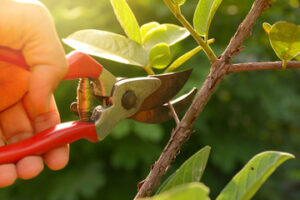 A professional arborist will know how to thin a tree without sacrificing stability. A professional arborist will know when and how to prune a tree to allow more light into the tree. Pruning can be done in stages; the tree’s growth rate depends on the species. As a rule of thumb, deciduous trees require more frequent pruning than evergreens.
A professional arborist will know how to thin a tree without sacrificing stability. A professional arborist will know when and how to prune a tree to allow more light into the tree. Pruning can be done in stages; the tree’s growth rate depends on the species. As a rule of thumb, deciduous trees require more frequent pruning than evergreens.
The top-down method begins with pruning from the root and works its way up. Each node is re-classified based on its relevance to the rest of the tree. Irrelevant nodes are removed, and leaves are substituted. The result is a simpler, faster tree. Generally, each node’s error rate is defined as err(T,S). This method reduces complexity without reducing accuracy.
Proper pruning is essential for developing a robust structure and attractive form in a tree. Pruning also prepares a tree for long-term health. Proper pruning will produce a strong structure and require less corrective pruning in the future. The groundwork of a mature tree is comprised of scaffold branches, which are essential for growth.
When pruning a branch, it is important to cut at a 45-degree angle to the branch’s base. This avoids damaging the stem and promotes callus formation. The pruning cuts should be one-third the size of the stem at the union. This prevents water damage and promotes quick healing.
The three most common types of pruning involve removing branches that are weakly attached or dead. These procedures are known as clean pruning. Clean pruning will remove dead or diseased branches and allow more air and light to penetrate the tree. In addition, it will open up the foliage and reduce weight on more substantial limbs. Thinning will also help maintain the natural shape of the tree.
When pruning a tree, it is important to be gentle and avoid wounding the bark. If a branch is cut off too close to the trunk, it will end up with torn bark. Experts recommend making a shallow cut in the underside of the branch, two to four inches beyond the collar.
A proactive homeowner will start pruning their tree soon after planting. This helps to remove diseased, dead and damaged branches. However, the majority of trees do better when pruning in mid to late winter. The lack of leaves also makes it easier to identify limbs. In addition, pruning in late winter will help trees recover from winter dormancy.
The primary goal of pruning is to improve a tree’s overall health and appearance. It also helps remove excess, diseased, or unnecessary branches. Pruning will also prevent the spread of harmful diseases and pests. Proper pruning will also encourage healthy new growth. It is a great investment in the future health of your trees and your property.
Tree pruning helps to remove dead or unhealthy branches so that new healthy branches can grow in. Some pests that require pruning include woodlice, lady bugs, spider mites, nematodes, beetles, scale, carpenter ants, termites, and fly larvae.
Sometimes when tree pruning is performed improperly, it can even damage the tree’s root system. Whether pruning is done properly or not, the roots will eventually require pruning, depending on the condition of the tree and its environment.
If the tree pruning has been done incorrectly, the process can result in root formation that does more harm than good. The most common areas where tree pruning should be done are on the lower trunk and the branches directly above it.
Pruning is usually done from the base upward, but if the branch is so large that it’s impossible to reach from the top, the branch must be pruned downwards. Also, pruning down is normally done as far down as the branch.
The main purpose of tree pruning is to keep the tree healthy, but the skill to do it properly comes from years of experience. Once pruning has been done once, it’s hard to revert back to the previous way of doing it, but those who have a history of doing it properly will learn how to do it properly.
Tree Removal Services
There are many reasons to hire Tree Removal San Diego CA. One of them is the safety of your family. The last thing you need is a tree that falls on you or your home or one that is heavy and unstable. Tree removal services to ensure your family’s safety. We remove all kinds of trees from private properties, including dead ones. Senske is also capable of removing stumps that may cause damage to your property or life.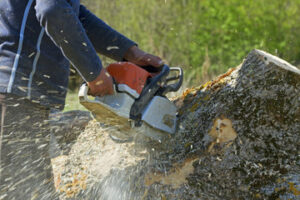
Tree removal costs vary according to the size and length of the tree. Some companies offer to remove fallen trees for free if you pay for the service. In some cases, the cost of tree removal depends on how far the company has to travel. However, the fee may be less than you’d expect if you were only removing a few small trees. Additionally, large trees may have extensive roots that damage your lawn, driveway, or home foundation.
Fallen trees are typically less expensive to remove than standing trees, but they still require heavy equipment to cut them down. As such, this service is more expensive than tree removal from the ground. A company can charge between $75 and $150 for removing a fallen tree. The cost of a tree removal service will also depend on whether the company will cut down the trunk of the tree or simply haul it away. If the tree is large, the cost will be even higher.
If the tree is less than 30 feet tall, you can save money on the cost of tree removal by pruning it yourself. A small tree with simple branches can be removed in a few hours, but a large tree with multiple trunks can cost upwards of $500. Small trees are typically less expensive because they don’t require the same level of complex branches as larger trees. Tree removal companies will usually quote prices per acre based on the number of trees and the location.
The location of the tree and its type will also influence the price of tree removal. Trees located near houses and other structures will require more effort and care. Likewise, a tree in an impossible-to-access location can increase the cost. While the cost of removing a tree from a hard-to-reach location may be low, it’s not always cheap. If you want to avoid paying a hefty tree removal cost, it’s best to get multiple quotes before deciding on the service. You’ll have more negotiating power when you’re comparing the prices.
Aside from the cost of tree removal, you’ll also need to pay for stump removal. Depending on the size and complexity of the root system, stump removal can cost anywhere from $150 to $500. A stump grinder costs around $100 to $400. For a smaller stump, you can buy a stump grinder from your local hardware store. If you decide to burn the tree, the price per stump is $250 to $450. Chemical treatment costs a mere $100.
If you need to remove a tree on your private property, you may want to check with your city or county regulations. While there are no special regulations for tree removal on private property, there are certain guidelines that you must follow in your locality. For instance, the city forester can declare a tree a nuisance if it is growing near a street or public road, and it is illegal to cut down cotton trees without a permit.
Some areas are more strict with tree removal regulations than others. These include environmentally sensitive areas, like wetlands. Homeowners who want to remove a tree must apply for a permit from the city before doing so. The city will only issue permits to those homeowners who submit a letter from an arborist stating that the tree is healthy.
In states, it is illegal to cut or remove street trees. However, if the tree is six and a half feet in circumference or larger, you must obtain a permit. This may be difficult for some people to understand, but it is essential to follow the regulations to avoid incurring heavy fines. The regulations for tree removal are often not well-known and are governed by local law.
Uprooting a tree is an example of a tree fall. It disrupts the soil by uprooting the tree and leaving a pit mound. In some instances, it can also damage surrounding vegetation. Listed below are some facts about uprooting trees. You may want to learn more about these natural disasters before you decide to use them on your property. Read on for information about the most common types of uprooting.
When You Want To Learn About Desktop Computers, Read This
Buying a computer can truly be a feat of genius. When you get a machine which offers you the features you need at a price you can afford, you just can’t go wrong. This article will steer you in the direction of the perfect computer deal that you’ve been looking for.
Always use antivirus software. Running without antivirus support can leave you vulnerable to malicious software invading your system. That software can take personal information and cause your machine to run slow. Lots of available programs can scan and repair the machine regularly.
People give desktops away for free today, so look for these opportunities. With so many people transitioning to laptops and other devices, you can find some sweet deals on desktop computers. Typically, these computers work fine, but check it out before buying it.
Look for an affordable desktop that has just what you need and nothing more. Many try to buy models that go beyond their budget with many extras that they don’t use or need. Be selective about the features and components in your desktop purchase to save money.
Consider what type of media you’ll want to play on your desktop computer. Do you have need of a Blu-ray player? Or is a DVD enough? Or maybe you tend to stream everything and have no need of any sort of optical drive. These will all factor in on the make you get and the price.
If you want a new desktop computer, look online. The internet has so many different deals and options, you are sure to find a computer that is both in your price range and does all the things you need it to do. The only thing you have to remember is to compare prices from different companies so that you’re getting the best deal.
Search no more! This article has provided you with the advice required to ensure your next computer purchase is right on the money. Using this new knowledge, seek out a computer which fits your list of requirements. In the end, you’ll be proud of yourself for taking the time to learn all you could.
You can also visit our other websites and post your article.
Great Northern Carving, A1 Bathroom 4U, Trees For Education, RDRY Wall Taping, Conwy Trees, Lab Home Now, 1886 Investments, Near Impact, Fort Sill Apache Nation, Jr Custom Built, Graphic Accounts, Zazen Gallery, HVAC Tab, Torto Wheaton, Files To Burn, AJ Pietig, ,Concrete, Keith Raniere Conversations, The Fish Oil Zone, Pool Deluxe, Motor Ama Assoc, Main Street Resources, Search Engine Semseo, Digital Delusion, Bryan Mc Quade, Perthmet, Cots Wold Internet, TWF Internet, Spirit Light Out Reach, YQB Name, Hambys Chapel, Performance Lifestyle Advisor , Ocean Leroy, The Herrick Lodge , Debbies Painted Pets, Tobyn Ross Photography Google Translates,
Things to Consider Before Hiring a Tree Removal Service
If your property has many trees, you should consider Tree Removal. Trees should be at least a certain distance from houses or other structures, but if they’re too close, you might want to consider removing some of them. Moreover, removing a tree will allow the remaining trees to grow properly. However, it’s important to hire a qualified arborist to evaluate the tree’s condition and potential danger before removing it. They can also give you an idea of the cost of Tree Removal and explain to you the different options available.
Tree Removal is well equipped to handle all kinds of tree removal projects. While they use specialized equipment and techniques to perform these tasks, they also know how to protect the surrounding area. This means that your property will be left in good hands. To get the best service, make sure to ask questions and learn more about the process. In fact, you may even end up saving money in the long run. Whether you’re dealing with a large tree or a small one, there are many things to consider before hiring a professional tree removal service.
The municipal code does not have any restrictions on tree removal on private property. However, the city has special requirements for removing street trees located adjacent to public properties. In contrast, trees on private property can be removed without a permit, but only when they are deemed to be a threat to public health or safety. Aside from these requirements, there are no specific laws regarding tree removal in the city.
While Tree Removal may not be necessary, the state does have specific regulations regarding the removal of trees. Some townships have ordinances that protect private trees. If you’re unsure of whether you can safely remove a tree on your property, you should contact the city forestry office. The Department of Forestry can also help you get a permit.
The cost of Tree Removal varies depending on several factors. For instance, the height of the tree, accessibility to other structures, and the type of equipment needed will all impact the cost. Tall trees require specialized equipment, which can increase the cost. Additionally, a tree near a building or house may require a crane or a chain saw, which will increase the overall cost. Once the decision has been made to get rid of a tree, you should consider what it would cost to remove it from your property.
A professional tree removal company will be able to safely remove the stump without disturbing the surrounding landscape. Stumps, however, can sometimes be left behind. This can cost a bit more than a normal removal, so it is best to discuss it with your contractor before the job begins. If the stump is large enough, you may also want to consider having the area cleared before you replant. But, the good news is that you can use the stump as firewood.
Tree removal companies charge by the height of the tree. Large trees are generally 60-80 feet tall. Small trees are generally 30 feet and under. The tallest trees are over 80 feet. Also, the condition of the tree affects the cost. The age of the tree, leaning, and multiple trunk growth can all raise the overall cost of removal. This article explains how to estimate the cost of Tree Removal and how much it will cost.
Tree removal services should be performed by certified arborists. An arborist is someone who has specialized training in expert tree care. A certified arborist must renew their certification regularly to stay abreast of new techniques. Moreover, an arborist must be insured, and they should have liability insurance. An uncertified arborist can damage your property. If a tree is unhealthy, it should be removed immediately. If you’ve got a tree that’s unhealthy and unsafe, you should call an arborist as soon as possible.
The cost of Tree Removal is not very expensive if you don’t hire an arborist. However, it can be expensive if you’re not sure how to do it safely. The process will take hours and involve heavy lifting. There are a number of factors that can increase the price. The type of tree you have can influence the cost of Tree Removal. The cost of a large oak tree is around $700 to $1,300, while palm trees range from 200 to 900 feet.
Is Winter the best time of year for tree trimming?
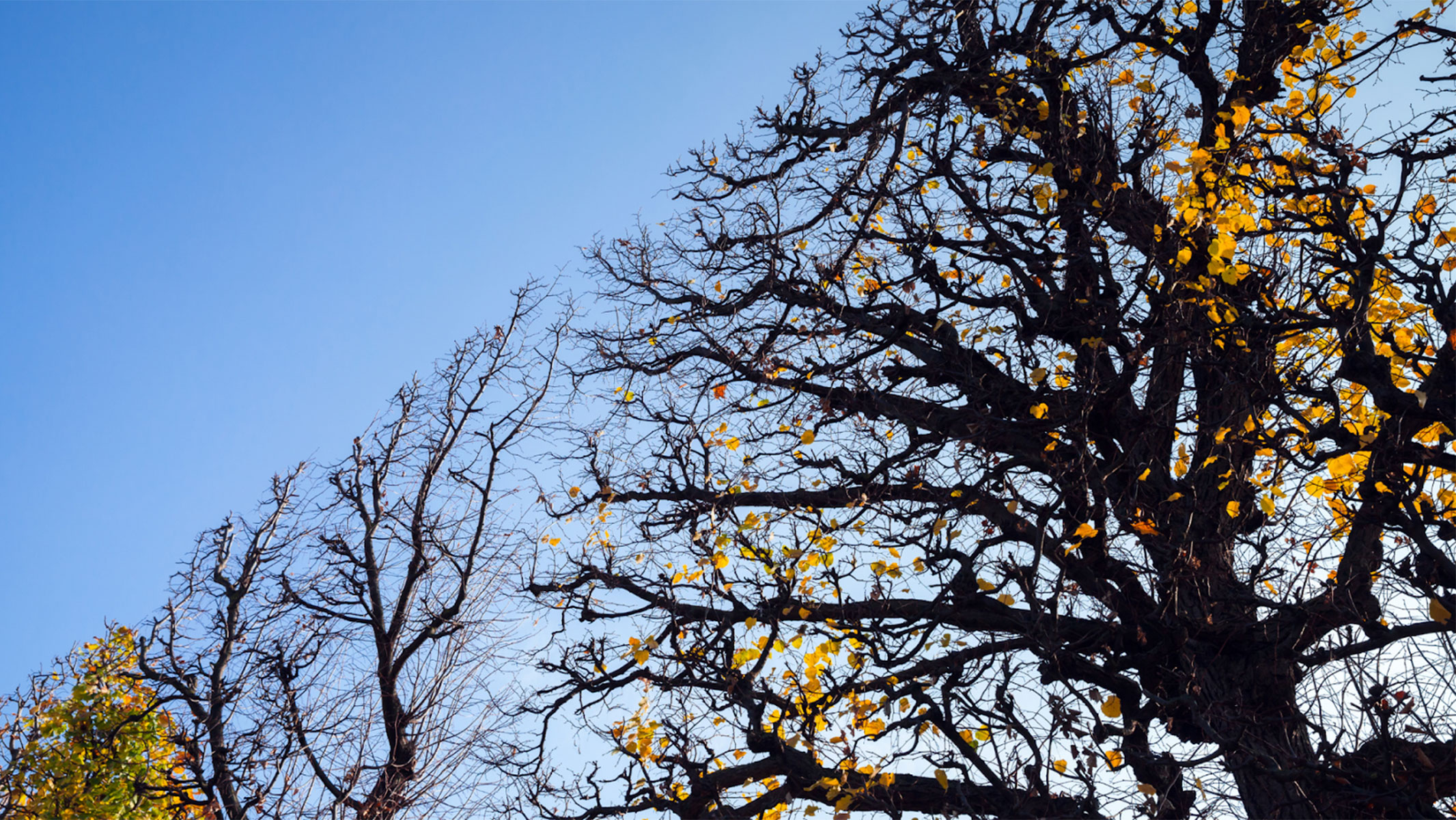
Tree trimming in a cold climate
If you’re an avid gardener you know there’s a perfect time of year for gardening tasks. Different veggies grow in different seasons. Fruit trees provide crops through certain months of the year too. The reason why plants and trees have different maintenance needs comes down to the climate. Each season of the year brings with it a climate that is more suitable for growing certain plants.
Over spring and summer, you may find that the warmer weather sparks rapid growth for a lot of trees and bushes. All the beautiful flower varieties like daisies and sunflowers start to bloom. Over autumn and winter, you’ll see flower varieties like grevillea start to bloom along with veggies like onions, cabbage and turnip.
When it comes to Tree Trimming there is a perfect time of year for it. Winter is one of the best times of year for tree trimming and pruning. The cold winter climate helps make a tree dormant. Its growth virtually comes to a standstill. It’s at this time that you can start getting rid of unwanted branches from your tree.
The benefits of tree trimming in winter
A colder climate
As we previously mentioned, a tree basically becomes dormant in winter. Growth almost comes to a complete standstill due to the cold weather. One of the hardest parts of tree trimming is assessing what needs to be done. There’s a thick layer of leaves that’s obstructing your view. By the time winter rolls around your tree has dropped its leaves. You have better visibility of what’s up in the tree canopy. You’ll be able to assess the tree easier and make better decisions about which branches need to be cut.
Fewer pests around
During winter your tree isn’t the only thing that’s dormant. Many of those annoying pests that attack your trees and plants are also nowhere to be found. They are most likely laying dormant or simply haven’t migrated to your backyard yet. With no food in sight, they won’t try attacking your tree when it’s being trimmed. If you trim your tree in Spring or Summer you leave it vulnerable to attack. Open wounds from where the branches used to be are vulnerable to attack from pests over the warmer months.
Less stress on your tree
Another advantage of Tree Trimming in winter is that it doesn’t stimulate new growth. The cold climate will help stop new branches from growing after you’ve removed older ones. Studies have also shown that tree wounds from winter have a better chance of healing when they get exposed to Spring weather. If branches are removed in Spring or Summer the energy required for new growth and wound healing will stress the tree out a lot more. This excess stress is what can lead to the tree becoming susceptible to pests and disease.
Protecting surrounding trees
When you prune a tree over the warmer months you are also endangering other trees around it. Tree diseases are usually spread to other trees with bacteria, fungi, insects, and parasites. Diseases can easily be transferred from pruned branches of your tree. The chances of this happening over spring and summer are very high. During winter you are far less likely to spread any diseases from one tree to another because they can’t survive the cold conditions.
Improved safety
Winter can be a dangerous time to be around dead and dying trees. If your area is prone to wild winds and storms there’s a high chance of branches snapping and breaking off. At the start of winter, it’s a great idea to assess your tree straight away and remove branches that look weak or brittle. Removing these weak branches effectively eliminates any safety hazards. You’ll be removing branches that could be causing damage to your home or surrounding properties.
Book a tree trimming service now before it’s too late
Worried about the health of your trees? It’s better to be safe than sorry. Booking a Tree Trimming service in winter is one of the best ways to help restore the health of your trees. This is also one of the best chances you have to safeguard your home from any potential tree damage that could occur. Call Daryl’s Tree Care today on 9897 4418 for a free quote on Tree Trimming services in your area.
The post Is Winter the best time of year for tree trimming? appeared first on Daryl's Tree Care And Surgery.
When is the best time of year for tree trimming and pruning?
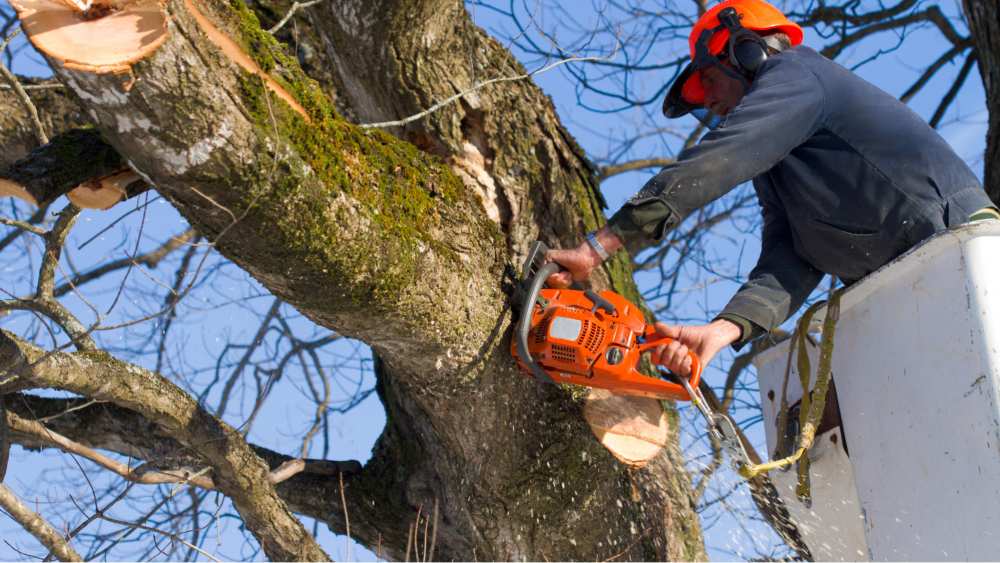
Timing is everything when it comes to keeping your trees healthy
There are many good reasons for tree pruning. When tree pruning is done right it can help maintain the health of your tree for years to come. Pruning and trimming your tree the right way can also help support its structural integrity. With dying branches removed there’s less chance of tree branches falling off the tree and causing damage to your nearby house or fence.
Some homeowners decide tree trimming and pruning is the way to go if they want to improve the look of their home. Removing dead branches can help give a tree a more unified and neater shape. Trimming off excess branches can also help reduce the number of leaves in a tree canopy. When you open up a tree canopy, it lets more sunshine and airflow into your backyard.
Another great reason for tree pruning is to stimulate new growth. Depending on the age and species of your tree, pruning branches can help stimulate new growth in areas of the tree that previously weren’t thriving. Take a strategic approach to tree pruning and you can even train your tree to grow in a new direction. You could train the tree to grow away from a section of your backyard where it’s causing issues.
Here at Daryl’s Tree Care, we get a lot of customers asking us when is the right time of year for tree trimming and pruning. When you know the right time of year for tree pruning and trimming it becomes a lot easier to plan it around other gardening activities. Knowing the right time in advance also helps a lot of people budget for the cost of tree pruning and trimming.
For some tree owners, the task of tree pruning and trimming is relatively small when there’s only one tree to take care of. When there are several trees in a backyard, the task can become very time-consuming. It’s one of the reasons why many locals choose us for a professional tree pruning and trimming service.
Our Aussie backyards may be full of tree species from around the world. But one thing they all have in common is when they need to be pruned and trimmed around the same time of year. As tree care experts we recommend that all your tree trimming and pruning should take place between winter and early spring.
Why are winter and spring a good time for tree pruning?
Is your tree a deciduous tree? If so that means it loses its leaves in autumn and stays dormant in winter. One thing that happens in winter is that the tree doesn’t ooze out sap when it’s branches are cut. Sap usually attracts many forms of insects and pests which can start feeding on your tree. So when you choose to prune your tree in winter, you’re not leaving it vulnerable to attack from pests like you would in summer.
During winter your trees are also in a dormant state. They are not investing their energy into new growth. So during this period, they can focus all their energy on healing any cuts made from tree trimming and pruning. In winter your trees are also better prepared for protecting themselves from germs and pathogens in the environment around them.
Another reason to prune your trees in winter and early spring is to prepare them for wild stormy weather. In Melbourne, we’re used to strong winds gusting down onto our backyards. These winds are so strong that they can cause branches to snap and fall off trees. So overgrown branches and rotting branches can become a serious threat to safety.
Strong winds pose a real safety threat because they can cause branches to fall off and damage your home. That’s why we recommend that you remove overgrown or dead branches before they become a potential hazard in spring when the windy weather picks up. When you weigh up the cost of tree pruning and trimming with hefty repairs to your home it’s clear why more people choose to maintain their trees properly.
Prune your trees before it’s too late
Worried about the condition of your tree? You should get it looked at by a qualified arborist straight away. Arborists specialise in tree care and maintenance. They have the skills and knowledge to assess the health of your tree. They can instantly recognise if your tree is dying and figure out what tree trimming and pruning is required to keep it healthy.
While winter to early spring is the best time for tree pruning, sometimes there is a greater sense of urgency. If a tree is deemed to be unsafe by your arborist then it should be pruned and trimmed straight away. Weak or dead branches that pose a threat must be removed as soon as possible. If your tree is infested with pests then that’s another sign it needs urgent attention. Pest can end up spreading to other healthier trees in your backyard and cause further damage.
Call your local tree pruning and trimming experts today
To help you make the right decision about your trees, speak to a tree expert today. Here at Daryl’s tree care and surgery, we have professional arborists who can inspect and recommend the right service for your tree.
We offer many tree care services including tree pruning, trimming, pest control, and cable bracing. After an initial assessment, we can recommend how often your trees need to be trimmed and pruned. With a maintenance schedule in place, you can leave the rest to us.
Call us today on 9897 4418 to get a quote on any of our tree care services.
The post When is the best time of year for tree trimming and pruning? appeared first on Daryl's Tree Care And Surgery.
When Is the Right Time to Remove A Tree?
When Is the Right Time to Remove A Tree?
What if you had a ticking time bomb in your garden?
That is what it can feel like when deciding to remove a tree. Few homeowners know the right time to remove potentially dangerous or unwanted trees. if you wait too long, or go about removing it the wrong way, you can cause some serious damage.
So, when is the right time to remove a tree, and what is the safest way to do so?
Continue reading to discover the answers!
Threats: When to Remove a Tree Right Away
Many different factors determine when you should remove a tree. But it is arguably most important to know when you must remove unwanted trees ASAP.
Generally speaking, you should have trees removed right away if you can see that it has any upheaving roots. It is always important to remove trees that are leaning because if they should fall, this may pose a significant risk to your home.
And even if it does not look like it could hit your home, beware of trees that might pose a risk to other structures (like storage sheds or even your neighbour’s home). If the tree looks like a threat, it must be removed right away.
Remove a Tree That is Infected
We have established that you need to remove trees right away that pose a real threat. But that threat is not always as obvious as a leaning tree. Sometimes, the threat comes in the form of infection.
If you notice that a tree has some kind of infection or disease, it is important to remove it right away. Why? Because left unchecked, the afflicted tree might spread infection or disease to other trees.
The trick is to recognize these infections and diseases before it is too late. If you cannot spot something like oak wilt or emerald ash borer, then the damage may be done before you realize the tree needs to be removed.
The Best Season to Remove a Tree
We have covered the situations where you need to have a tree removed ASAP. But if the tree you want to remove isn’t diseased, infected, or posing a risk to a building, then when do you need to take it down?
If you do not mind waiting, it is generally best to remove trees during a dormant season. This is the period between late winter and early spring, and it is easier to remove trees during this time.
Why? At this point, the tree will have shed its leaves and will be much lighter and easier to move. We still recommend that you hire a professional (more on this in a bit) but removing trees during the dormant season makes the whole process easier and more efficient.
Busting a Seasonal Myth
Some homeowners are shy about hiring tree surgeons or other professionals because they want to save a bit of money. And that brings us to another major question: is there a time of year that it is always cheaper to have trees removed?
Despite popular belief, the honest answer to this question is “not really.” Typically, professionals charge you based on many factors that have little to do with the season or time of year. This includes things like the type of tree, the size of the tree, and the tree’s location.
If I wait until the dormant season will it speed up the process? Probably. But it is not necessarily going to be much (if at all) cheaper to remove a tree during winter than during summer.
Alternatives to Removing a Tree
If you are reading this, then you have got removing a tree on your mind. But it is important to figure out whether you need to remove the entire tree or simply prune it.
For example, you may want to remove a tree because unwanted branches are now hanging down and scraping your car in the driveway. But professional pruning can take care of the tree branch while still leaving the tree standing.
It is possible to do some light pruning work on your own. However, aggressive pruning can cause damage to the tree. For best results, we recommend hiring a professional tree surgeon.
You can have a tree pruned most times during the year. But you should try to avoid any pruning of a tree right after its spring growth period because this causes stress and damage to the tree.
Truly Delicate Work
When we talk about pruning a tree, you might think that this is easy and simple work. However, the entire process is more complex and more delicate than you might have previously imagined.
First, you need to have the right tools. Many homeowners do not already own proper tree-pruning tools. And if you use the wrong tools, you might end up damaging the tree.
Second, you need to understand the important differences between the trees. Some types of trees (like conifers) will need almost no pruning while others will need constant care throughout the year.
Finally, you need to understand the way different trees react to pruning and the risks this may pose. Some trees bleed sap during pruning, and this poses a potential risk of infection to the pruner as well as the tree.
Why Hire a Tree Surgeon?
We have mentioned the need to hire tree surgeons for things like pruning and tree removal. But what is it that makes hiring a tree surgeon worth it?
Such surgeons already have all of the tools and equipment they will need. By hiring their services, you save money on buying many tools of your own. And you do not have to worry about storing those tools all year round.
Tree surgeons also have the experience to do the job quickly and efficiently. And they know enough about local laws and ordinances to remove your tree in a way that does not put anyone in legal danger.
Finally, tree surgeons understand tree health. They know how to prune trees without harming them and how to remove diseased trees without endangering other trees.
Your Next Move
Now you know when to remove a tree. But do you know who can help you do it?
We specialize in tree pruning, tree removal, tree lighting, and so much more. To see what we can do about your trees, come request a free quote today!
Article was written by Conner D.
Article Source: https://www.graftingardeners.co.uk/remove-a-tree/
Tree Emergencies and The Effects of Storms on Trees
Tree emergencies and how to deal with them.
Storms can affect trees in different ways. The effect is influenced by lots of factors including wind direction and speed, rain duration and intensity, location, health and age.
Trees are great at adapting to a change in conditions but this is a slow process that takes decades; they can’t adapt to a single change in weather due to a storm, of course.
Tree emergencies due to storms can take many forms. Storm damage is often different from the damage caused by floods. Of course, both can happen simultaneously.
Tree Emergencies Caused by Storms with Flooding
Lots of places around the world have natural floods annually. The shrubs and trees native to these parts have been able to adapt to prolonged periods with their roots submerged.
There are problems if non-native species are introduced in these areas because they have not adapted to being submerged in water since their native areas do not experience flooding.
When the soil is waterlogged, there is a decline in its ability to sustain life. This happens because the available air in the soil is swapped for water. This means that the roots do not have access to essential oxygen supplies.
This means that damage can happen in as little as three hours. Being submerged in water kills the tree’s fine root hairs. This means the tree’s water-absorbing ability is seriously affected. It cannot take up nutrients and water until the water level falls.
When a tree is deprived of oxygen, there is a build-up of gases that lead to the larger tree roots dying. This can affect the tree’s stability.
What’s more, flooding causes the soil’s structure to deteriorate. Particles of clay lose their stickiness, which reduces the soil’s aptitude to grip onto the roots. This means that trees are more likely to fail at the root plate level.
Floodwater also affects the pH of soils. This means that the levels of nutrients and minerals could be affected.
All in all, when soils are flooded, there is both a long-term and immediate effect on tree longevity and health. The longer the flood persists, the worse the problem.
Flood Stress Seen in Trees
Tree flood stress is not always visible immediately. It manifests itself in a variety of ways, including:
- A reduction in the size of leaves for new growth
- Yellowing of leaves (chlorosis)
- Epicormic branch and stem growths
- Crown dieback
- Lack of new leaves in spring or defoliation
- Early change of colour in autumn as well as early falling leaves
- Prolific mast or seed crop the year after the flood
Care for Flood-Stressed Trees
Caring for a tree after floods impacts on its survival chances as well as the tree quality that remains.
Here are some steps to help:
- Remove any build-up of sand or silt so that the soil is back to its normal level. Make sure you also look to cover any roots that have been exposed. This should be done with topsoil.
- Incorporate organic or composted material like mulch into the topsoil to improve its structure. Make sure you do not damage any roots. Professional tree surgeons will use something called an ‘air spade’ for this task.
- A layer of mulch or other organic, composted material will help the soil to retain its moisture. Try not to add anything like fertiliser because it uses a lot of the tree’s energy.
- Watch out for colonisation. Stressed trees often have trouble fighting off secondary organisms like insects, fungi, and bacteria.
Storms with no Flooding
When there is no flooding, the main issue with storms is the wind. Trees are susceptible to storm damage when the force of the wind exceeds the tree’s structural strength. This type of storm damage is very obvious; you will often see large parts of the tree snapped or even a whole tree uprooted.
Some storm conditions might cause less obvious damage. Limbs and stems can have fractures while remaining intact. Trees also might be uprooted partially but don’t fall over. There might be broken branches that haven’t fallen.
If the storm involved lightning, you might notice large wounds in the tree’s bark. Lightning strikes can also result in the tree’s destruction. Once subjected to a lightning strike, there is not much that can be done to help a tree.
Luckily, it is rare to see such major storm damage and proactive, expert tree management means you can reduce the risks.
Why be Proactive?
Proactive tree work is cost-effective since you can protect your trees with the highest risk and greatest value. Tree work can be scheduled and planned and will avoid those emergency call-outs (and their cost) if there is storm damage.
Unfortunately, with climate change, we are likely to see lots more unsettled and stormy weather. If we want trees to survive well, we need to make sure they’re inspected frequently and well managed.
It’s a good idea to seek comprehensive tree assessments with experienced tree surgeons and tree consultants. They will be able to advise tree owners and help them keep their trees safe as well as healthy.
According to statistics by the Health and Safety Executive (HSE), there are around 5 or 6 people killed each year in the UK due to falling branches or trees. Around 3 of these occur in a public space.
Of course, this makes the risk of being killed or struck by a tree extremely low; these numbers mean the risk is about 1 in 10 million. Despite the low level of risk, we need to consider how the public perceive the level of risk, especially if there has been a recent incident. Thus, tree owners should take great care in ensuring they look after their large trees.
Final Thoughts
While typical weather events can help to strengthen trees, excess forces or waterlogging from storms can cause problems. With consistent conditions, trees can adapt and initiate developmental changes to compensate for changing weather patterns.
Thanks to their biological engineering, they can adjust to loading, if the conditions are typical. When storms, floods, ice, or snow occur, the trees might not fare well. Extreme forces cause damage, injuries and even tree death. You can protect your trees with regular tree care by expert tree surgeons.
Article was written by Louise W.
Article Source: https://www.graftingardeners.co.uk/tree-emergencies/
WHAT TO LOOK FOR IN HIRING A TREE TRIMMER
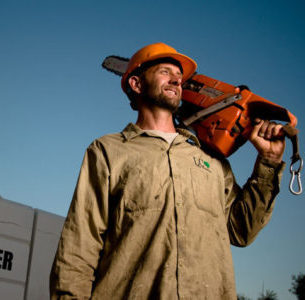




People need the help of a tree service company for a variety of reasons, from a single tree on a residential property that needs a trim, to dozens of trees that need to be removed for a large construction project. Sometimes, you may also have a sick or infested tree that needs treatment, or you may also just require an arborist consultation or arborist report. Whatever the reason, it is important to choose wisely. Trimming and removing trees is extremely dangerous work. Unfortunately, trees get butchered and accidents happen. Trees can sometimes be unpredictable, and not to mention, tree trimmers are working on these towering limbs and trunks with running chainsaws! So what should you look for when hiring a tree service company for your property?
REPUTATION
Is the tree service company that you are considering hiring a reputable one? Do they have good reviews on third-party websites, like Yelp or Google? Yes, this may be biased towards new companies that haven’t had the time to build their online presence, since all companies, including ours, had to start with nothing to show. But when the market is saturated with so many tree care companies to choose from, it’s wise to choose one whose work many people have been pleased with, rather than one that doesn’t possess much of a reputation, so you really don’t know what outcome you’ll be receiving.
It is good to look for reviews outside of a company’s website since they tend to be more trustworthy. Sadly, not all reviews on a company’s website can be trusted as legitimate. We know this first hand because, on more than one occasion, other tree service companies have copied our website content onto their site, including our customer reviews. So, to make a long story short, look to verifiable reviews when you are trying to determine what company to use.
INSURANCE
Choosing a tree service company that is fully insured is one of the most important features that you must consider.
Fact 1. Trimming and removing trees is undeniably dangerous work.
Fact 2. Accidents happen.
If the tree service industry is so precarious, you would think that ALL tree companies would naturally have insurance. But lo and behold, many companies do not! “Why wouldn’t they?” you may wonder. Well, due to the dangers of the industry, insurance rates are extremely high. Some tree business owners simply do not want that high of an expense because if they did have insurance, it would cut drastically into their profits. Therefore, it isn’t always the best idea to settle with the lowest bidder, especially if there is a huge difference between bids.
Here is an example scenario. You need a tree removed, so you collect bids from three different tree care companies.
Company #1 quotes $3,000.
Company #2 quotes $3,500.
Company #3 quotes $1,200.
As you can see, the $1,200 quote that you received from Company #3 is drastically lower than the other companies. Too drastic of a difference! Yes, from a financial standpoint, it is the most appealing. But there is a hidden reason why they can afford to charge so little. It could be that they pay their employees “under the table,” so they don’t have the payroll taxes and all the other expenses that go hand-in-hand with payroll. It could be that they are inexperienced and unknowingly underbid the project — which will not result in a good outcome for them, but also for the customer. We’ll touch on that later in this article. It could also be that they are not insured, so consequently, they do not have the expenses that the other companies have to consider when drafting your quote. It could also be a combination of all the above mentioned. That is just a bad recipe for additional disaster if disaster were ever to hit!
What type of “disasters” could happen on a tree project? The most common mishap would be property damage. Sometimes, even with the most experienced and skilled companies, limbs fall in an unexpected direction, damaging whatever is situated below, such as fences, roofs, sprinklers, landscape, and hardscape. In the worst-case scenarios, a person can get injured or even fatally injured. If anyone is injured on your property, then you, as the property owner, could be held liable IF the injured worker was not covered by insurance. So, please ensure that any tree worker you contract to work on your property is properly insured as a safety precaution for everyone.
LICENSED
Ensure that you hire a tree service company with a license. We’re not just talking about a business license (which they should have also), but a contractor’s license with the state. When you hire a licensed tree company, you are hiring a company that cares to do things right. Would you want to hire a company that doesn’t care to conduct business legally? What does that say about the business owner’s ethics? Many people are not aware that when a business owner applies for a contractor’s license, they are required to be fingerprinted in order for a criminal background check to be conducted. This should give you, as the hiring party, some sense of assurance.
Of course, that’s not to say that all licensed contractors conduct business ethically or that unlicensed contractors all conduct business unethically. Many unlicensed contractors have good intentions to provide great service at the lowest possible price. But unfortunately, there is a lack of accountability. And, it is not unheard of for a contractor to unexpectedly disappear from a partially-completed job — usually because the project was underbid, and it ended up being more difficult or taking much longer than expected to complete. Then, the customer is left with an incomplete job and no contractor left to finish it.
Unlicensed tree trimmers also lack complete insurance. They may possess general business insurance, but in order to qualify for general liability insurance (which is what helps you and the company if property damage is incurred), workman’s compensation, and bonding, you must possess a contractor’s license. All of these precautionary expenses that tree care companies incur are hefty, hefty, hefty! So an unlicensed tree contractor who doesn’t need to deal with them has a huge cost advantage that enables him to provide the lowest bid compared to their licensed and insured counterparts.
AFFILIATIONS
If you have already done some shopping around for a tree service company to work with, you may have noticed that many companies list out organizations that they are registered with. You may have even recognized the same organization logos on different arborists’ websites and/or recognized similar organization initials, such as ISA and TCIA.
ABC…123…what do all these mean? And why should you care?
Hiring a tree care company that has industry affiliations is important because it demonstrates that the company:
- cares to grow in their field, as these organizations provide yearlong resources for learning.
- has a desire to network with other companies, which can help increase their accountability and reputation.
- cares about increasing their knowledge of business operations. This is vital because a business owner who cares about business operations cares about providing great customer service.
The most recognized national arborist organizations are ISA (International Society of Arboriculture) and TCIA (Tree Care Industry Association). A company may also have affiliations with groups outside of the tree industry but pertain to associated industries — such as property management groups, construction and builders groups, and business networking groups. Recognizable companies in San Diego, as well as nationwide, include BOMA (Building Owners and Manager Association) and BIA (Building Industry Association). Why would those non-arborists groups matter? Because if a tree service company has large property management companies and builders on their clientele list, then chances are that they deliver impressive outcomes and possess strong customer service that these companies continue using them.

CREDENTIALS
Now that you’re more familiar with industry affiliations, let’s move on to credentials. ISA, which is the leading arborist organization in the nation, is the same group that grants the credential of Certified Arborist. In researching tree care companies, you may have seen some promoting the title of Certified Arborist — or better yet, ISA Certfied Arborist.
Certified Arborist. ISA Certified Arborist. Is there a difference? No, they’re the same certification because ISA is the only organization in the nation that grants them. So a Certified Arborist is technically also an ISA Certified Arborist.
Hiring a Certified Arborist is different than hiring just any arborist, which is the title given to anyone whose work involves trimming and removing trees, and/or tree health care. Anyone can learn to trim trees through job experience, on-site training, and even through YouTube. But having the credential of being a Certified Arborist means the individual is trained and knowledgeable in all aspects of arboriculture. In order to be granted the title, an applicant must have a minimum of three years of full-time work in the tree industry. A formal exam must also be passed that covers the ins and outs of trees, including topics such as soil management, tree biology, safe work practices, and more.
KNOWLEDGE
Does the tree care company you are considering hiring for your project seem to be knowledgeable about their field? Not everyone in the arboricultural industry actually understands the science involved with trees. This is important because if you’re seeking to have a tree trimmed, for example, it’s important for an arborist to understand the impact that pruning has on trees. How much is a safe amount to prune off? How will trimming certain areas affect the tree’s future growth projection? What season is best or harmful for certain species? For example, if you find a tree trimmer who is open to trimming your pine tree in the summer — keep shopping! That person receives an F in Tree Biology 101! Pine trees should never be trimmed in the summer, and any arborist who knows trees would know that bit of rudimentary information.
Hiring a tree care company that also specializes in tree health care is a feature that is beneficial because:
- You may unknowingly have a tree infested with pests or infected with a disease that the company’s estimator may notice during your estimate.
- Early detection of an infestation or infection is key to saving your tree.
- Tree Health Care Specialists can easily detect signs of common pests and diseases in the area, so the proper diagnosis and treatment can be given.
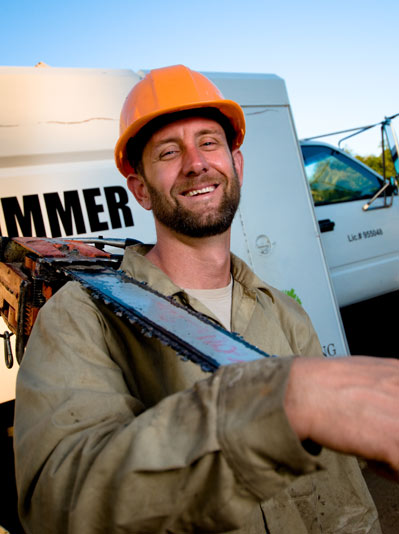
PROFESSIONALISM
Another important feature to look for in hiring a tree service contractor is the company’s professionalism. Do they present themselves professionally — as an actual business or more of a side gig or one-man show? You could say that this would be a valid “judge a book by its cover” scenario because how a company presents itself speaks volumes on how behind-the-scenes operations are handled. Some tree trimmers that you meet with for a quote may come across as gruff and/or dirty. Not so much of a surprise. It is a tough and messy job. And it doesn’t mean that just because the person you are meeting looks that way, they will do a poor job. Even LC Tree Service started off as a small, one-man show, but Founder, Larry Coalson — even as dirty as he was during estimates — still was able to provide outstanding work for his first set of customers.
If your tree estimator appears as though he just came from a job, it’s because he did. And not only did he already cut down some limbs and trees that day, but he also had to answer phone calls, return phone calls, reply to emails, draft invoices, dump the truck to prepare for the next day’s job, and maybe even do some equipment maintenance. As you can clearly see, this person is busy — not to mention tired — as working in the sun and carrying heavy loads for hours a day takes a toll on just about anyone. So when one person is handling the entire process or at least 90% of it, then it shouldn’t be a surprise when phone calls take a while to return or jobs take an extended amount of time to complete. While all companies could have the occasional slip-up in returning a call or email in a timely manner or take longer than expected to complete a project, companies that employ a team of field workers and administrative staff tend to be more efficient in their performance and customer service since they have more people to help carry the load.
CUSTOMER SERVICE
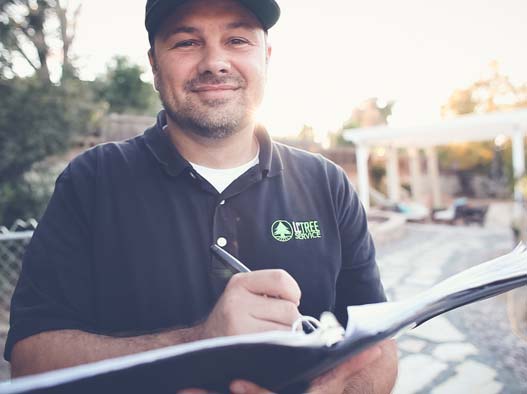 Going hand-in-hand with gauging a company’s professionalism, their customer service is still another factor to consider when you start contacting and meeting with different tree care companies.
Going hand-in-hand with gauging a company’s professionalism, their customer service is still another factor to consider when you start contacting and meeting with different tree care companies.
- Were your phone calls and/or emails responded to in a timely manner?
- Were they friendly on the phone or via email?
- Was the estimator friendly and make you feel like you would be taken care of?
- Did you feel like your desires concerning the project and opinion were heard?
After you decide to book your project with a company, the service you receive prior to booking can be reflective of the service you would receive during the job and afterward.
LET’S SUMMARIZE
CHOOSE A TREE SERVICE COMPANY THAT:

NEED ASSISTANCE WITH YOUR TREES OR PROPERTY?
LC TREE SERVICE WOULD BE HAPPY TO HELP!
619.677.5777
The post WHAT TO LOOK FOR IN HIRING A TREE TRIMMER first appeared on San Diego Tree Trimmers – LC Tree Service.